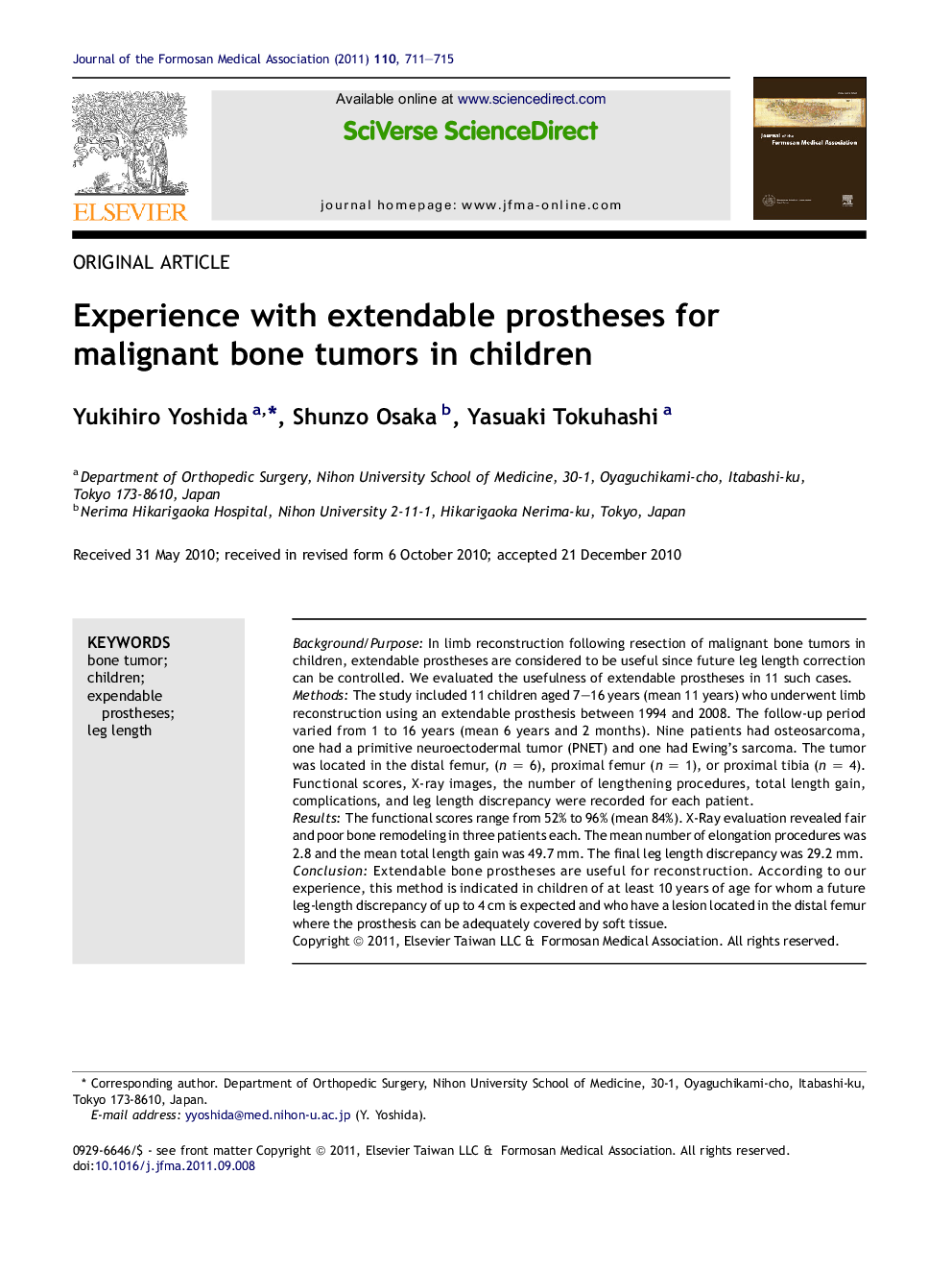| Article ID | Journal | Published Year | Pages | File Type |
|---|---|---|---|---|
| 3479189 | Journal of the Formosan Medical Association | 2011 | 5 Pages |
Background/PurposeIn limb reconstruction following resection of malignant bone tumors in children, extendable prostheses are considered to be useful since future leg length correction can be controlled. We evaluated the usefulness of extendable prostheses in 11 such cases.MethodsThe study included 11 children aged 7–16 years (mean 11 years) who underwent limb reconstruction using an extendable prosthesis between 1994 and 2008. The follow-up period varied from 1 to 16 years (mean 6 years and 2 months). Nine patients had osteosarcoma, one had a primitive neuroectodermal tumor (PNET) and one had Ewing’s sarcoma. The tumor was located in the distal femur, (n = 6), proximal femur (n = 1), or proximal tibia (n = 4). Functional scores, X-ray images, the number of lengthening procedures, total length gain, complications, and leg length discrepancy were recorded for each patient.ResultsThe functional scores range from 52% to 96% (mean 84%). X-Ray evaluation revealed fair and poor bone remodeling in three patients each. The mean number of elongation procedures was 2.8 and the mean total length gain was 49.7 mm. The final leg length discrepancy was 29.2 mm.ConclusionExtendable bone prostheses are useful for reconstruction. According to our experience, this method is indicated in children of at least 10 years of age for whom a future leg-length discrepancy of up to 4 cm is expected and who have a lesion located in the distal femur where the prosthesis can be adequately covered by soft tissue.
